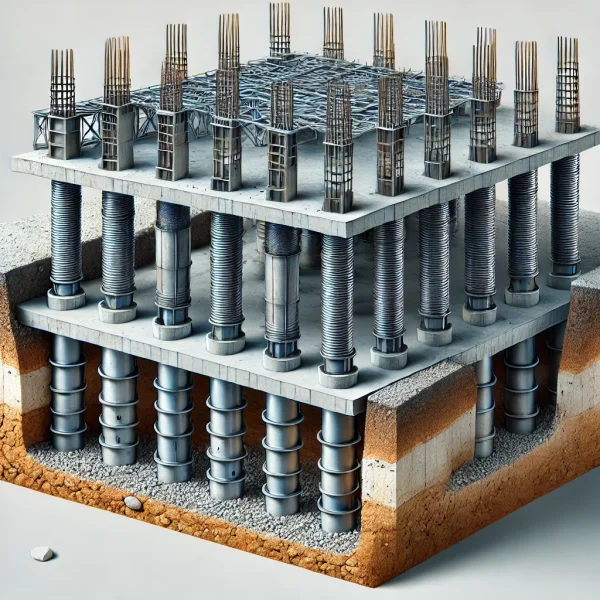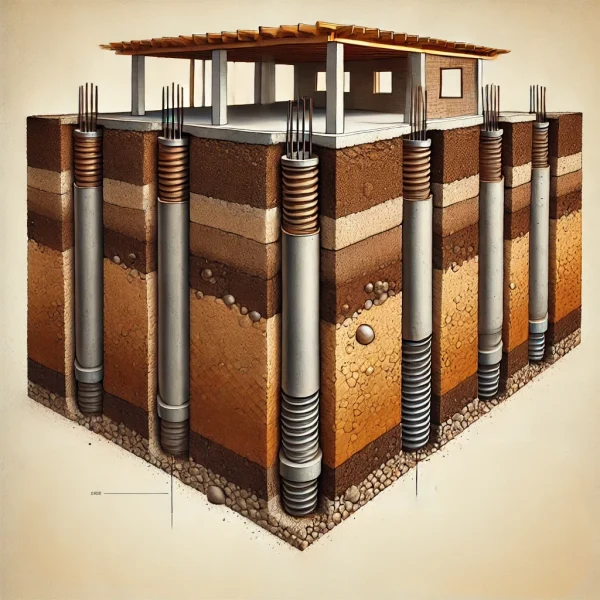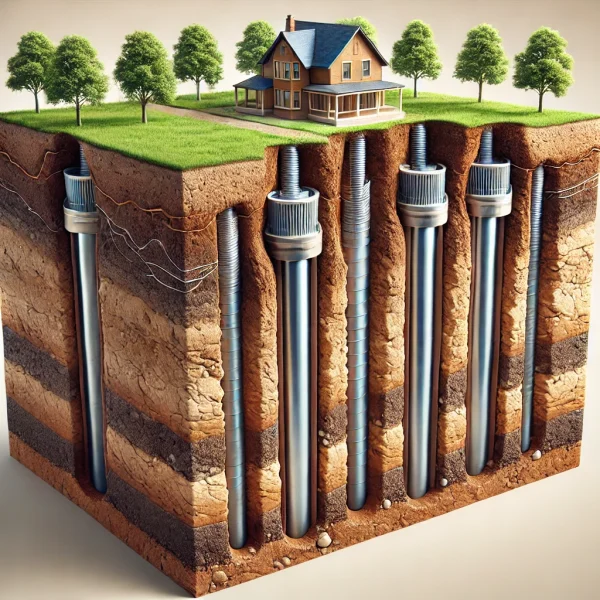1. Foundation Piers Provide Superior Strength

Foundation piers are constructed from resilient materials, including concrete and steel, designed to bear the weight of heavy structures. The durability of these materials ensures that foundation piers can withstand the immense pressures from above while remaining stable in the soil below.
The power of steel and concrete lies in their proven ability to support extensive weight. Steel piers, for example, are favored for deeper installations due to their strength and adaptability to varying soil conditions. Concrete piers, although more affordable, also offer substantial stability, especially in soil that doesn’t require deep penetration.
This strength is vital in stabilizing not just the foundation but also in preventing further cracks and fractures that may occur if a foundation continues to settle unevenly.
2. Foundation Piers Offer Long-Lasting Stability

Unlike surface-level foundation repair methods, foundation piers deliver a solution built to last the life of the building. By anchoring into stable soil strata well below the shifting top layers, foundation piers provide a solid base that remains unaffected by seasonal changes in the soil above.
For homeowners, this translates to a solution that doesn’t just fix the problem temporarily but ensures long-term peace of mind. Without the need for frequent repairs, foundation piers prove to be cost-effective in the long run, ultimately preserving property value. While piers like steel piers are often more expensive upfront, their durability means fewer repair costs over time, which often justifies the initial investment.
3. Foundation Piers Improve Soil Stability

One major cause of foundation issues is unstable soil, particularly in areas prone to soil expansion, contraction, or erosion. Foundation piers address this by extending deep into the ground, anchoring into soil layers that are less likely to shift or compress under the building’s weight.
Installing foundation piers reaches beyond the active zone where soil expansion or contraction typically occurs, preventing uneven settlement. The soil stability that foundation piers bring makes them especially beneficial in areas with clay-rich or silty soils, which are notorious for causing foundation movement. As a result, the building remains steady and secure, safeguarding it from future shifts caused by unstable soil.
4. Foundation Piers Ensure Even Weight Distribution

An often-overlooked benefit of foundation piers is their ability to evenly distribute the weight of a structure. Uneven settling, caused by weak points in the soil, can lead to cracks in walls, misaligned doors and windows, and even safety hazards within a building. Foundation piers help spread the load across more stable soil, minimizing these issues.
By offering support at strategic load-bearing points, foundation piers keep buildings balanced and prevent the sort of structural stress that leads to uneven floors and visible damage. This even distribution is especially critical in larger or multi-story buildings, where unequal weight allocation can quickly become a significant issue.
5. Steel Piers vs. Concrete Piers: Understanding the Best Fit for Long-Term Repair

Choosing between steel piers and concrete piers can influence both the effectiveness and cost of your foundation repair. Steel piers can be installed deeper into stable soil, making them ideal for structures that require extensive support and for locations where the soil near the surface is especially prone to instability. This deeper placement means that steel piers are often preferred for long-term foundation repair.
Concrete piers, while not typically installed as deep as steel, offer a reliable option for foundations in stable soil conditions. They are generally more affordable than steel piers and still provide robust, long-lasting support, particularly in regions where the active soil layer is shallower.
Consulting with a professional contractor is key to determining the best pier type for your foundation. A misaligned pier solution can worsen foundation issues, which is why having a customized plan that considers soil type, building size, and environmental factors is crucial. Improper foundation repair can lead to further defects and costly follow-up repairs, emphasizing the importance of expert guidance.
Conclusion
Foundation piers are an effective, durable solution for stabilizing and reinforcing a building’s foundation, particularly for structures experiencing issues with settling or soil instability. By providing substantial strength, long-lasting stability, improved soil anchorage, even weight distribution, and adaptable options, foundation piers offer numerous benefits that can address a range of foundation challenges.
